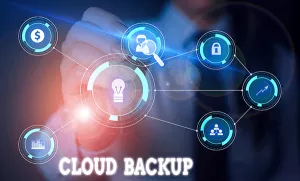With the massive number of office closures brought on by COVID-19, millions of employees are now working remotely, creating new backup and recovery challenges for IT admins. While some businesses are already reopening, many will continue having their employees work remotely. Google is one example of the new normal, with plans to have most employees continue working remotely until 2021. Forbes speculates that even when businesses can safely reopen, more employees will likely continue to work from home than before the pandemic. These changes have forced IT admins to adapt to new requirements for backup and recovery. Fortunately, there are recognized best practices for keeping data safe and recoverable, even during the work-from-home era.
Revise Your Recovery Objectives

Your backup and disaster recovery (BDR) plan must include recovery objectives that help you determine what success looks like. With remote work becoming a new standard, it’s a great time to reevaluate your recovery time objectives (RTOs) and recovery point objectives (RPOs). Ask yourself, given my current situation, can I still get systems back up and running fast enough to avoid costly downtime? What if I can’t be there in person? With people working in many places, can I still back up systems frequently enough to protect critical data? If not, will my infrastructure need to be upgraded to achieve these goals, and do I have the budget? And, does my current backup solution give me the flexibility I need to keep data protected and easy to recover, even remotely? That brings us to our next section.
Evaluate Your Current BDR Solution
There are plenty of backup solutions, but many don’t offer the features you need to manage fully remote backup and recovery. Before you make any infrastructure or policy changes, reevaluate the backup solutions driving your BDR strategy. Ask yourself these questions:
- Does the solution allow me to deploy agents to remote machines?
- Does it give me a cloud-based console to manage backups?
- Can I test backups remotely?
- In a pinch, could an end-user restore a backup if I can’t help?
- How much flexibility do I get in terms of options for storing backups (local storage vs. public cloud vs. private cloud)?
- Can I restore machines without physically accessing them?
- How easily can I do everything above in an emergency?
If your BDR solution can’t do these things, you may struggle to meet your recovery objectives.
Focus on Cloud-Based Backup and Recovery
The cloud makes the work-from-home era possible. According to data from Box, digital collaboration has increased by 19 percent in the last two weeks of February 2020 relative to same period in 2019. But it’s not just file and folder sharing that depends on the cloud. An effective remote backup strategy uses the cloud for taking and storing backups, restoring them, and managing the whole process. Let’s take a quick look at each of these areas. Remote Management In the work-from-home era, admins might need to do everything remotely. You must be positive you can monitor, maintain, test, and recover every backup from wherever you are. With StorageCraft ShadowXafe and StorageCraft OneSystem you can do all of this from a single web-based console. This means that no matter where you or your devices are, you can meet recovery objectives with pre-defined policies, all with a few clicks. Remote Backups We’ve discussed the importance of the 3-2-2 rule for backup in previous blogs. Just because you have the added challenge of remote workers doesn’t mean you should skimp on redundancy. The 3-2-2 rule works like this:
- 3: Keep two local copies of your data, including the one on the original hard drive, for a total of three
- 2: The two copies should be on two different types of media
- 2: Those two copies should also be stored or replicated to two separate off-site locations
Remote Recovery Most backup solutions let you take remote backups and store them locally or offsite. But in an emergency, it’s recovery that matters. Since you may not have physical access to machines, you must be able to restore data from wherever you are. When you use StorageCraft Cloud Services, you can restore backups virtually from the cloud. If a remote employee has a hardware failure, you can get them up and running on a virtual machine (VM) that they can access through a web browser on a different machine. Should a production server go down, you can spin up a backup as a virtual machine and keep it running, even if you can’t physically access the equipment.
Recover No Matter What
While BDR in the work-from-home era is challenging, the right solutions will make it easy to nail your recovery objectives no matter where your endpoints are located. These days, it shouldn’t matter where you, your users, or your devices are. Your BDR solution should allow you to do everything you need to do remotely. Why compromise? If you’re looking for a solution designed to help you recover reliably no matter the circumstances, take a look at StorageCraft’s Disaster Recovery as a Service (DRaaS) to see how simple it can be to handle remote BDR, even during tough times like these.
You May Also Like
- Backup and Disaster Recovery Business Continuity Cybersecurity Data Protection Data Resilience Ransomware
How Ransomware Works and What Your Company Can Do About It Today
April 18th, 2024 - Backup and Disaster Recovery Business Continuity Data Resilience
How to Build Business Resilience: A Comprehensive Guide for Today’s Enterprises
April 16th, 2024 - Backup and Disaster Recovery Data Storage
Primary Storage vs Secondary Storage: What's the Difference?
April 9th, 2024